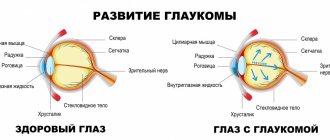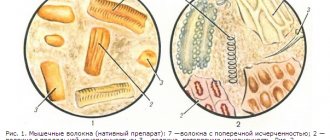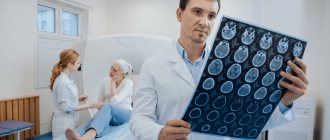Albinism is a rare genetic disorder.
A genetic mutation is manifested by the absence of coloring pigment in the cells of the skin, hair and eyes.
At the same time, the production of melanin (coloring pigment) is influenced by the presence of a gene in the DNA chain, which is susceptible to mutation. Albino children are born when one of the parents (or both) is an albino. The birth of an albino is also guaranteed when one of the parents has a recessive gene in their DNA, but is not an albino themselves.
General information
Albinism (from the Latin albus - white) is a hereditary disease and belongs to the group of aromatic acid metabolism disorders (ICD-10: E70), which is characterized by a congenital partial or complete absence of the pigment melanin , while the skin remains of a completely normal appearance and shape integument, hair and iris of the eyes, but they are discolored, pale or simply of a lighter shade. Albinos rarely differ in health from the rest of the population, except for vision problems and an increased risk of burns or skin cancer .
This anomaly occurs in approximately 1 out of 10-20 thousand individuals on the planet, regardless of ethnicity and gender; in the area of the “founder effect” mutation in Africa, this figure is much higher - for every 150 people there is an albino (source: Wikipedia).
Melanins determine the color, color, color of feathers, fish scales, insect cuticles, etc. among all creatures on Earth, the term comes from the ancient Greek and the root "melas" and means black. The more protein-bound pigment (melanoproteins) synthesized by melanocytes, accumulated in melanosomes and deposited in keratinocytes, the richer and darker the color of the integument. In humans, these processes occur under the influence of the melanostimulating hormone of the pituitary gland and UV radiation.
Melanocytes and melanin in human skin
In addition to the color variety, pigments perform a protective function - they prevent radiation damage by absorbing ultraviolet rays. They take part in the neutralization of free radicals, acceleration of chemical and biological reactions, protection against stress and in adaptogenic processes. Melanins are a whole group of various high molecular weight pigments, which include:
- eumelanin is the most common type of black-brown pigment;
- pheomelanin - a polymer that provides a reddish color or a characteristic pink coloring of the lips, nipples, genitals, in addition, it makes the hair red;
- neuromelanin , which is found in significant quantities in the structures of the inner ear and brain, its functional significance is still not clear.
In plants, this variant of pathology is expressed in the form of a lack of chlorophyll in the body.
Hermansky-Pudlak syndrome
Hermansky-Pudlak syndrome (HPS) was first described in 1959 in two unrelated families in patients with albinism, bleeding diathesis, and pigmented reticular cells in the bone marrow, as well as in biopsies of lymph nodes and liver.
Hermansky-Pudlak syndrome is an orphan disease: its frequency in the world ranges from 1:50000 to 1:1000000, but some types are common in Puerto Rico (for example, the frequency of type 1 in this population is 1:1800, type 3 - 1: 16000) [10].
Currently, Hermansky-Pudlak syndrome includes 11 types associated with 11 genes. The main pathogenetic link is a violation of the adapter protein complex-3 (AP3) or the biogenesis system of the lysosome-associated organelle complex (BLOC 1–3), which are important components of the membranes of cytoplasmic organelles and participants in the transport of vesicles. Defects in the proteins that make up these complexes lead to pathological changes in the structure and function of lysosomes, melanosomes, and dense platelet granules.
The main clinical manifestations of Hermansky-Pudlak syndrome: albinism, pigment deposition in the cells of the reticuloendothelial system and impaired platelet aggregation (due to the absence of dense granules containing serotonin, adenine nucleotides, Ca2+, fibrinogen, adrenaline, von Willebrand factor, antiheparin factor). Hemorrhagic diathesis can manifest itself as frequent nasal, gingival, intra- and postoperative bleeding, and menorrhagia in women. Laboratory findings indicate the absence of dense platelet granules, detected by electron microscopy, with a normal platelet count and normal prothrombin time. In addition, granulomatous colitis, pulmonary fibrosis, and cardiomyopathy (not common to all types), resulting from ceroid-like deposits in tissues, are associated with Hermanski-Pudlak syndrome [20, 21]. A brief clinical description of all known types of Hermansky-Pudlak syndrome is given in Table 1 [19–37].
Albinism and hemorrhagic diathesis occur in all types of Hermansky-Pudlak syndrome. The main differences are systemic manifestations: thus, pulmonary fibrosis develops in types 1, 2, 4 and 8, and there is a high risk of developing granulomatous colitis in types 1, 3, 4 and 5. Cellular immunodeficiency with an increased risk of developing hemophagocytic lymphohistiocytosis is more common in patients with types 2, 9, 10 and 11 of the syndrome. In type 10, central nervous system damage is also described, including delayed motor development, muscle hypotonia and epilepsy.
Pathogenesis
Congenital absence or deficiency of pigment in the body can develop under such conditions as a lack of enzymes necessary for the synthesis of melanin molecules, for example, melanin migration throughout the body requires macrophages-melanophores, which are not capable of its synthesis in the absence or defectiveness of tyrosinase. In some albinos, tyrosinase levels are normal, so it is assumed that there are other enzymes important for melanin metabolism. In the case of Chediak-Higashi syndrome, albinism develops as a result of impaired transport of melanin granules into melanocytes.
Scheme of the process of darkening skin and hair
A decrease in the polymerization of the melanin molecule occurs under the influence of oxidative stress, light rays and changes in pH, as well as local concentrations of various metal ions. Such processes cause the transition of melanin from an antioxidant form to a pro-oxidant one, causing degenerative processes in the macula and the development of melanoma .
4.Treatment
Intensive research is currently underway to develop methods for gene correction of the anomaly that underlies albinism. There is reason to believe that etiopathogenetic therapy will be developed in the foreseeable future, and such a need really exists, since albinism, as shown above, limits the quality of life, affects not only appearance and, in general, is not a harmless variant of the norm.
Currently, they are limited to the selection of corrective eye optics, as well as strong recommendations to avoid exposure to direct sunlight.
Classification
Depending on the number of phenotypic manifestations, it is customary to distinguish between the oculocutaneous and ocular forms of albinism. However, with a deeper study, the genotypic characteristics of the patient are also taken into account:
- The oculocutaneous type, code OCA2, is most characteristic of individuals of African descent and is found in almost every ten thousandth person in the population; the pathology causes a congenital decrease or absence of pigment in the structures of the skin, hair and eyes.
- The type of yellow eye albinism is more common among representatives of the Amish religious group, who are most often of German or Swiss origin and in infancy are distinguished by snow-white skin and hair, but the pigmentation normalizes over time.
- The temperature-sensitive form is associated with the synthesis of a special heat-dependent tyrosinase, the activity of which increases at lower temperatures, and at 37 ° C its activity drops to 25%, so the hair under the arms and on the head remains light or yellowish, and on the limbs and other parts of the body Those exposed to cold have darker skin and hair, and their eyes are usually blue.
- Autosomal recessive ocular form - may be characteristic of individuals with impaired tyrosinase or protein P synthesis; they manifest all the signs of normal ocular disorders.
Attention! Parkinson's disease is a disorder affecting neuromotor function due to decreased levels of neuromelanin in the locus coeruleus and substantia nigra, which is caused by a specific loss of pigmented dopaminergic and noradrenergic neurons. As a result, less dopamine and norepinephrine .
Complete albinism in humans
Complete or generalized albinism belongs to the oculocutaneous group and is manifested by a lack of pigmentation not only of the eyes, but also of the skin and hair.
Complete albinism is more common in consanguineous marriages, since the disease is autosomal recessive and both parents must be carriers of the defective genes. From birth, their children lack pigment in the skin and appendages as in the photo of the child. The skin is dry, the hair is discolored, visual acuity is sharply reduced, and may increase at dusk. Albinos in this group are characterized by pronounced photophobia and increased photosensitivity, as well as, in some cases, hypotrichosis , hyperkeratosis and dementia .
Albinism in a child
Partial albinism
For people with partial (ocular) albinism, an autosomal type of inheritance is possible and the most typical manifestations of eye disorders are:
- refractive errors;
- astigmatism and other binocular vision disorders;
- underdevelopment of the optic nerve;
- a certain type of nystagmus , which is compensated by tilting the head and makes it possible to improve vision;
- the lack of pigment in the iris gives it a transparent appearance, or it can be gray-blue or light brown;
- strabismus.
Interesting to know! Partial albinism quite often manifests itself as heterochromia - different colored irises in individuals with a relative excess or deficiency of melanin. The spectrum of colors usually ranges from blue to green, but there are also cases of brown eyes, which can darken with age.
Incomplete albinism may also be called albinoidism and causes the development of areas of achromic skin and gray hair.
Types of albinism
There are two main types of pathology - ocular albinism and oculocutaneous albinism. In this case, oculocutaneous albinism is divided into 4 types:
- The first type - skin, eyes and hair are completely devoid of pigment. There are no freckles or moles on the body.
- The second type - the body has pigment in a reduced amount. Moles and freckles may appear.
- The third type is characteristic of Africans. People with this type have reddish-brown skin. Hair color is most often red.
- The fourth type - skin cells have a small amount of pigment in the skin. Most often found among the Japanese nation.
The most common types of oculocutaneous albinism are types 1 and 2.
Causes
Skin color is a trait determined by genetic factors. Albinism is transmitted by an autosomal recessive and, in very rare cases, autosomal dominant mode of inheritance and develops as a result of genetic disorders associated with the formation of tyrosinase , and can therefore be considered an enzymopathy.
Melanin synthesis
Depending on the type of damage and the nature of the mutations, pigment deficiency may develop to varying degrees:
- missense mutations, nonsense mutations and frameshifts in the tyrosinase gene (chromosomal region 11q14-21) lead to the development of oculocutaneous albinism (1A and 1B) as a result of the absence or reduced level of tyrosinase;
- nonsense and other mutations on chromosome 11q24 lead to the most severe form of the disease - classic tyrosinase-negative oculocutaneous albinism 1A, in which the produced tyrosinase is completely inactive;
- mutations in the human gene responsible for the regulatory protein TRP-1 in the production of eumelanin cause the A3 form and manifest phenotypically in African individuals with reddish-brown skin and hair with brown-blue irises;
- various mutations (more than 50 types), causing a decrease in tyrosinase activity to varying degrees, give variability in skin pigmentation - from slightly pigmented to almost normal;
- a mutation in the gene encoding P protein (15q11-13) causes oculocutaneous albinism 2A, which is most pronounced in infancy, but with age the skin acquires more or less pronounced pigmentation and the hair darkens somewhat, the punctate and radial transparency of the iris transforms into hypopigmented retina;
- recessively X-linked disorders in the Xp22.3 locus encoding a glycoprotein required for melanosome maturation cause ocular A1 albinism and disturbances in the visual analyzer, including reduced visual acuity, refractive errors, occurs only in men, women are usually carriers, but the pigmented part of the epithelium The retina of the eye may have dirty colored patches and transparent lines.
Albinism as a manifestation of diseases
- Hermanski-Pudlak syndrome is a manifestation of an autosomal recessive hereditary disorder in the form of oculocutaneous albinism (various degrees of skin discoloration and nystagmus, strabismus, foveal hypoplasia, pneumosclerosis , frequent nosebleeds, bleeding gums, retinal hypopigmentation and decreased visual acuity), as well as platelet deficiency, disturbance of lysosomal-ceroid accumulation and, as a consequence, accumulation of ceroid in body tissues. Ceroid deposits can lead to interstitial pulmonary fibrosis, inflammatory bowel disease, renal failure, and cardiomyopathy.
- Chediak (Steinbrink)-Higashi syndrome - belongs to a group of autosomal recessive disorders (as a result of a mutation in the 1q42.1-q42.2 locus) and is characterized by increased susceptibility to infections due to insufficient activity of natural killer cells, albinism appears white or light brown hair color, skin usually creamy white or slate gray.
Factors that reduce melanin levels in the body
- taking certain hormonal medications;
- diet errors that lead to deficiencies of vitamins and minerals, as well as tryptophan and tyrosine ;
- aging;
- hormonal disorders;
- frequent stress;
- lifestyle in conditions of insufficient sunlight, for example, reclusive.
Ocular albinism
Ocular albinism type 1 (ocular albinism Nettleship - Folza, OA1, XLOA, OMIM (Online Mendelian Inheritance in Man) #300500) is an X-linked recessive type of albinism, phenotypically manifested mainly in men. Ocular albinism is caused by mutations in the GPR143
, located on the X chromosome in the Xp22 region and encoding the protein of the same name.
The GPR143 protein is a G protein-coupled receptor (GPCR) that is produced exclusively by melanocytes and retinal pigment epithelium. This type of albinism is characterized by infantile nystagmus, decreased visual acuity to 0.3 [4], depletion of pigment in the iris and fundus, foveal hypoplasia, and photophobia. Hair and skin pigment preserved. Mosaic hypopigmentation of the iris and grade 1 iris transillumination are widespread in female carriers, not accompanied by a decrease in visual acuity [4, 5]. Cases of women being affected by a homozygous mutation in the GPR143
or non-random inactivation of the X chromosome have been described. The incidence of the disease, according to the Orphanet database, is 1–9:100,000 [3]. Mutations in this gene are also associated with X-linked congenital nystagmus type 6 (OMIM#300808).
Symptoms
In humans, albinism can cause disturbances in the body in such organs and systems as:
- visual analyzer - the iris can be blue or translucent; as a result of exposure to bright lighting on the choroid plexuses of the retina and the transparency of the iris of the eyes, it acquires a pink or red tint; vision usually suffers from the lack of melanin and people develop photosensitivity or even photophobia, visual acuity decreases, possible manifestation nystagmus and amblyopia , and macular degeneration may also occur;
- auditory analyzer - the connection between albinism and deafness is known, although the mechanism is not well understood and is most often observed in people with Waardenburg syndrome, usually living in North America;
- skin and hair - visible hypopigmentation at birth, the integument is not capable of tanning, the presence of pigmentless nevi (moles) is possible.
Important! Without pigmentation, the skin becomes more susceptible to the rays of sunlight and its damaging forces, therefore the risk of sunburn and squamous or basal cell skin cancer increases - many albinos die at the age of 30-40 from cancer, so parents are advised to consult a doctor as soon as possible if suspected a child with albinism to prescribe preventive measures.
Treatment
Since albinism is a congenital pathology associated with heredity, it is completely impossible to cure such a problem. If skin or eye diseases develop against the background of albinism, symptomatic manifestations are treated. In cases of disorders associated with the retina or nerve fibers, blindness may develop, which is also characteristic of ocular albinism.
All albinos, without exception, are prohibited from looking at bright light without sunglasses and tinted lenses. With complete albinism, you should protect your skin from sunlight as much as possible and use cosmetics with a high degree of sun protection.
In cases of severe forms of strabismus, surgery is recommended. It is possible to use special overlays for strabismus with moderate development. An individual drug course of treatment can also be selected.
Starting from childhood, albinos need to avoid eye strain; for this, children are allowed to read materials in large font. The size of the letters is chosen by the ophthalmologist, based on the severity of eye problems.
Diet for albinism
Diet for eyes, nutrition to improve vision
- Efficacy: therapeutic effect after 2 months
- Timing: constantly
- Cost of products: 1800-1900 rubles. in Week
For albinism, it is recommended to follow the rules of a healthy diet, complete and balanced, excluding any harmful foods: fast food, street food, processed foods and canned food. It is recommended to focus on:
- eggs and dietary meats;
- liver and other offal;
- fish dishes;
- avocados, bananas, dates, apples, citrus fruits and other fruits;
- nuts;
- natural dairy products;
- various vegetables, including carrots, various types of cabbage, leafy greens, cucumbers;
- legumes and cereals;
- use unrefined vegetable oils.
Chediak-Higashi syndrome
Chediak-Higashi syndrome (CHS, OMIM#214500) is a rare autosomal recessively inherited syndrome, the development of which is associated with mutations in the LYST
(OMIM#606897), encoding an adapter protein involved in the regulation of lysosomal transport.
Chediak-Higashi syndrome was first described by Beguez-Cesar in 1943; subsequently Chediak (in 1952) and Higashi (in 1954) supplemented the phenotypic description of the syndrome. Currently, about 500 cases of this disease have been described in the world, but the exact number of patients cannot be determined due to the existence of abnormal mild forms, in which the diagnosis is confirmed at 30 years of age or later [38], or due to repeated descriptions of patients throughout life [ 39].
Phenotypic manifestations of Chediak-Higashi syndrome are oculocutaneous albinism, hemorrhagic diathesis, neurological disorders, as well as primary immunodeficiency and recurrent infectious diseases. Visual disturbances include horizontal nystagmus, astigmatism, iris hypopigmentation, macular and foveal hypoplasia. Visual acuity varies from 0.3 to normal [40]. Damage to the nervous system is manifested by delayed motor and psycho-speech development, peripheral neuropathy, ataxia, parkinsonism and seizures; examination reveals a decrease in deep tendon reflexes, a decrease in nerve conduction velocity, MRI reveals diffuse atrophy of the brain and spinal cord, and giant granules in Schwann cells are also detected during biopsy [41, 42]. A laboratory blood test reveals: giant inclusions in polymorphonuclear neutrophils and, to a lesser extent, in lymphocytes; normal or reduced number of natural killer cells with abnormally reduced function; neutropenia and dysfunction of neutrophils, such as chemotaxis and intracellular bactericidal activity; absence or reduced number and abnormal morphology of dense platelet granules [39].
In 65–85% of patients with Chediak-Higashi syndrome, during the first decade of life, against the background of an infectious process, an “acceleration” phase develops with a rapidly progressive massive lymphoproliferative reaction, a “cytokine storm” and the risk of developing hemophagocytic lymphohistiocytosis [43].
Rare hereditary syndromes with partial albinism
Geno-phenotypic correlations for different types of albinism have not yet been established: even patients whose disease is caused by the same mutations may have clinical manifestations of varying severity, including within the same family. In addition, there are hereditary diseases associated with hypopigmentation of the structures of the eyes, skin and hair, but without the key signs of albinism, such as foveal hypoplasia, fundus hypopigmentation, abnormal optic chiasm and nystagmus - such syndromes are included in the group of partial or partial albinism. , albinism. These conditions include Griscelli syndrome, Waardenburg syndrome, Tietz syndrome, Åland Islands disease, and FHONDA syndrome. In addition, it is necessary to differentiate ocular albinism and the group of diseases with X-linked congenital nystagmus.
Griscelli syndrome
- an autosomal recessively inherited syndrome with partial albinism: there is moderate hypopigmentation of the skin and gray/silver-gray hair without eye damage.
There are 3 types of the disease depending on the gene involved and phenotypic characteristics: with type 3 ( MLPH
, OMIM#609227), only hypopigmentation of the skin and hair is noted, with type 1 (
MYO5A
, OMIM#214450) there is a neurological deficit with spasticity, hemiparesis, epilepsy and mental retardation.
RAB27A
gene , OMIM#607624), patients also exhibit cellular immunodeficiency and a high risk of developing hemophagocytic syndrome.
Waardenburg syndrome
has genetic and phenotypic heterogeneity, including the type of inheritance - most types are inherited autosomal dominant with incomplete penetrance and variable expressivity, some types are also inherited autosomal recessively.
All genes associated with Waardenburg syndrome are known: types 1 and 3 - PAX3
, type 2A -
MITF
, type 2D -
SNAI2
, type 2E and 4C -
SOX10
, type 4A (variable inheritance depending on the pathogenic variant - autosomal dominant (AD) or autosomal recessive (AR)) -
EDNRB
, type 4B (also AD or AR inheritance) -
EDN3
. The main signs of this group of diseases are sensorineural hearing loss, facial dysmorphia (characteristic of certain types), impaired pigmentation of hair strands in the frontal region (piebaldism), complete or partial heterochromia of the irises, dystopia of the medial commissure of the eyelids, hypopigmentation of the iris and fundus with nystagmus (not described). for all types).
Tietz albinism-deafness syndrome
(Tietz syndrome, TADS, OMIM#103500) is an allelic variant of Waardenburg syndrome type 2A and is also caused by a heterozygous mutation in the
MITF
. The main clinical manifestations are blue iris, hypopigmentation of the retina, hair and skin, but without signs of nystagmus and transillumination of the iris and with preserved visual acuity. A distinctive feature is bilateral sensorineural hearing loss of the 3rd–4th degree [44].
Åland Islands disease
, also known as Forsius-Eriksson ocular albinism (AIED, OMIM#300600), is associated with mutations in the
CACNA1F
, located on the X chromosome, and is an endemic disease for this group of islands.
First described in 1964 by Forsius and Eriksson within the same family in men in 6 generations. Clinical signs include protan color blindness, fundus hypopigmentation, foveal hypoplasia, decreased visual acuity, nystagmus, myopia, and astigmatism. Visual acuity varies from 0.1 to 1.2. In female carriers, slight disturbances in color vision and nystagmus without mosaic hypopigmentation of the fundus were observed. A distinctive feature of this type of albinism is the absence of macromelanosomes in skin biopsies and an abnormal optic chiasm in the chiasm [45]. Pathogenic variants in the CACNA1F
in other populations have been described in patients with congenital stationary night blindness (CSNB2A, OMIM#300071).
Consequences and complications
In addition to the physiological disorders and risk of cancer described above, albinos living predominantly in Africa are subject to discrimination and persecution, as there are myths about the healing properties of their body parts. There are known cases of attacks on people in order to obtain their limbs and organs, so quite often they were provided with shelter and protection by representatives of more developed countries.
Man with albinism from Tanazania is a victim of superstitions and attacks
Diagnostics
The main diagnostic method for identifying albinism is the study of DNA materials. When analyzing DNA, sections of chromosomes are isolated to identify gene mutations. When ocular albinism is determined, the patient is prescribed an electroretinogram. It may be necessary to submit the material for chemical hair analysis.
Albino people are also advised to regularly visit a dermatologist and ophthalmologist. All family members need to donate blood for diagnosis. Also, when examining under special conditions, the polymerase chain reaction method is used.
Albinos are endowed with supernatural properties
Apparently, because albinos are not like other people and do not tolerate daylight well (they suffer from photophobia due to the lack of eye pigmentation), there are many myths and beliefs around them. Thus, legend says that in the palace of Emperor Montezuma (XV century, North America) there was a special room for “white creatures”, which were sacrificed to the gods during solar eclipses. Representatives of the tribes living on the Isthmus of Panama believed that children with milky white skin were born to mothers who looked at the moon during conception. In Medieval Europe, albinos were considered accomplices of the devil and were burned at the stake. South African tribes believe that albinos are able to predict the future, read minds, heal with touch, fly through the air, sleep and be awake at the same time, turn water into blood and kill from a distance. There is a myth that after death, albinos disappear, melting into thin air. Some people specifically kill albinos to test this. But they are also deprived of their lives for other reasons: various parts of the body of albinos are used in magical rituals performed by local shamans. On the black market you can buy the blood of albinos, their eyes, limbs and even genitals. Even children are killed. According to legend, if an albino's hair is woven into a fishing net, it will attract a rich catch. And if you sprinkle the ground with the ashes of the burnt remains of an albino, then gold will come to the surface. It is believed that albinos have magical powers and are capable of bringing misfortune to their fellow villagers. Therefore, they are subjected to all kinds of discrimination, including denial of medical care. But in their dead form, on the contrary, they can be useful. There have been so many episodes of African albinos being killed or maimed that the authorities have recently become seriously concerned about this problem. But it was not possible to overcome the obscurantism of the local population. Although, of course, there is no real evidence that albinos have any unusual properties, except for the non-standard color of their skin, hair and eyes.











